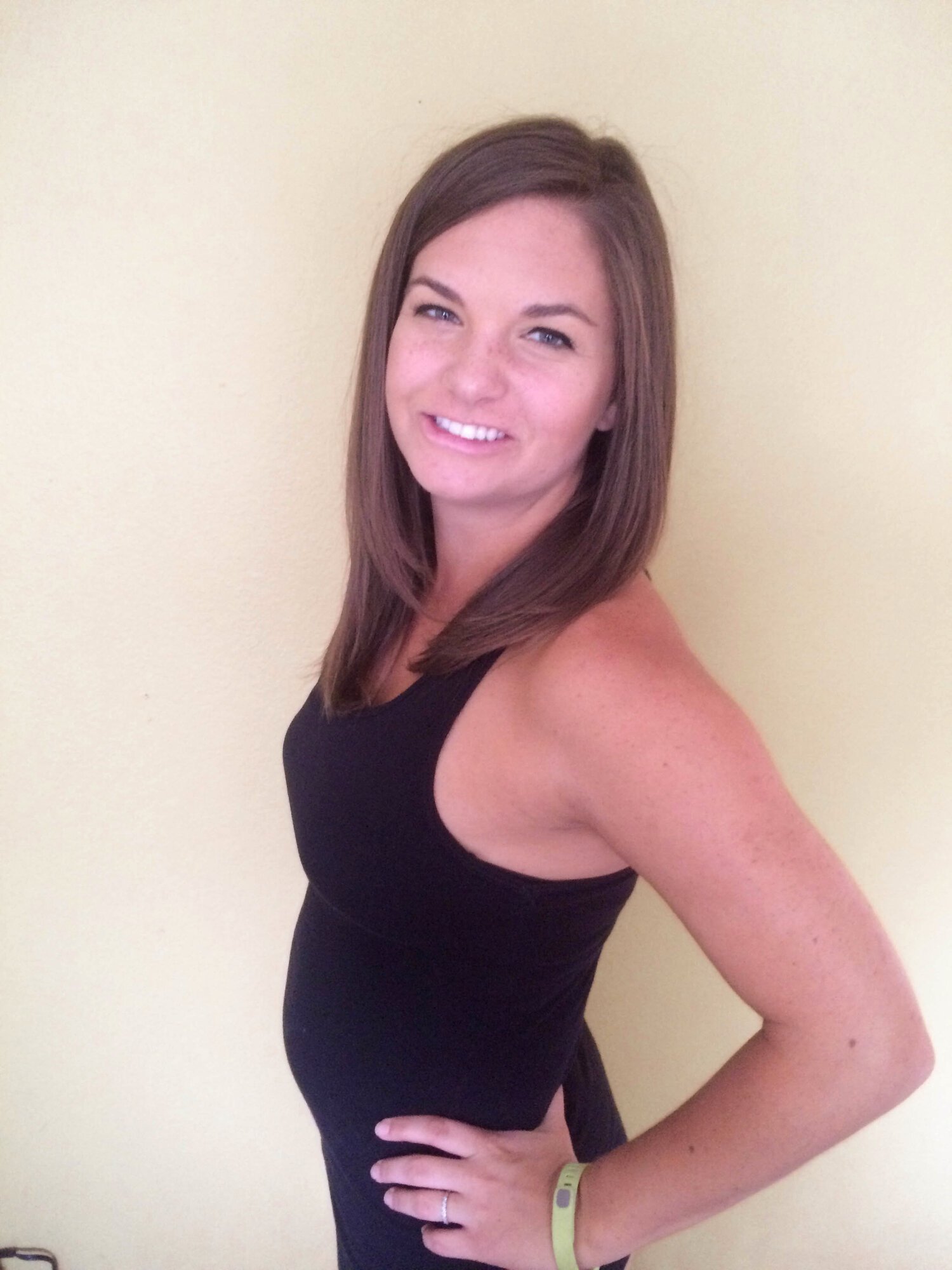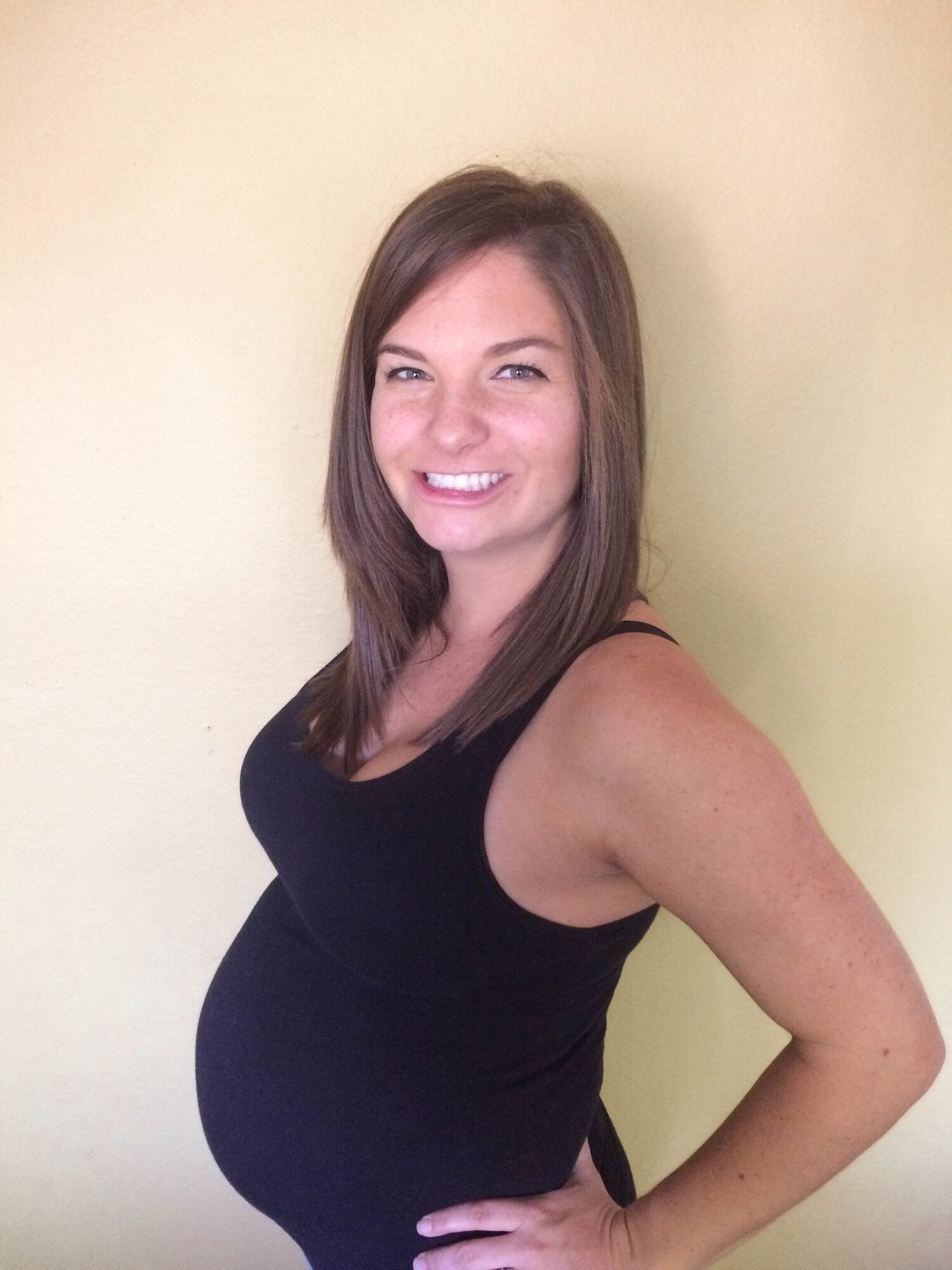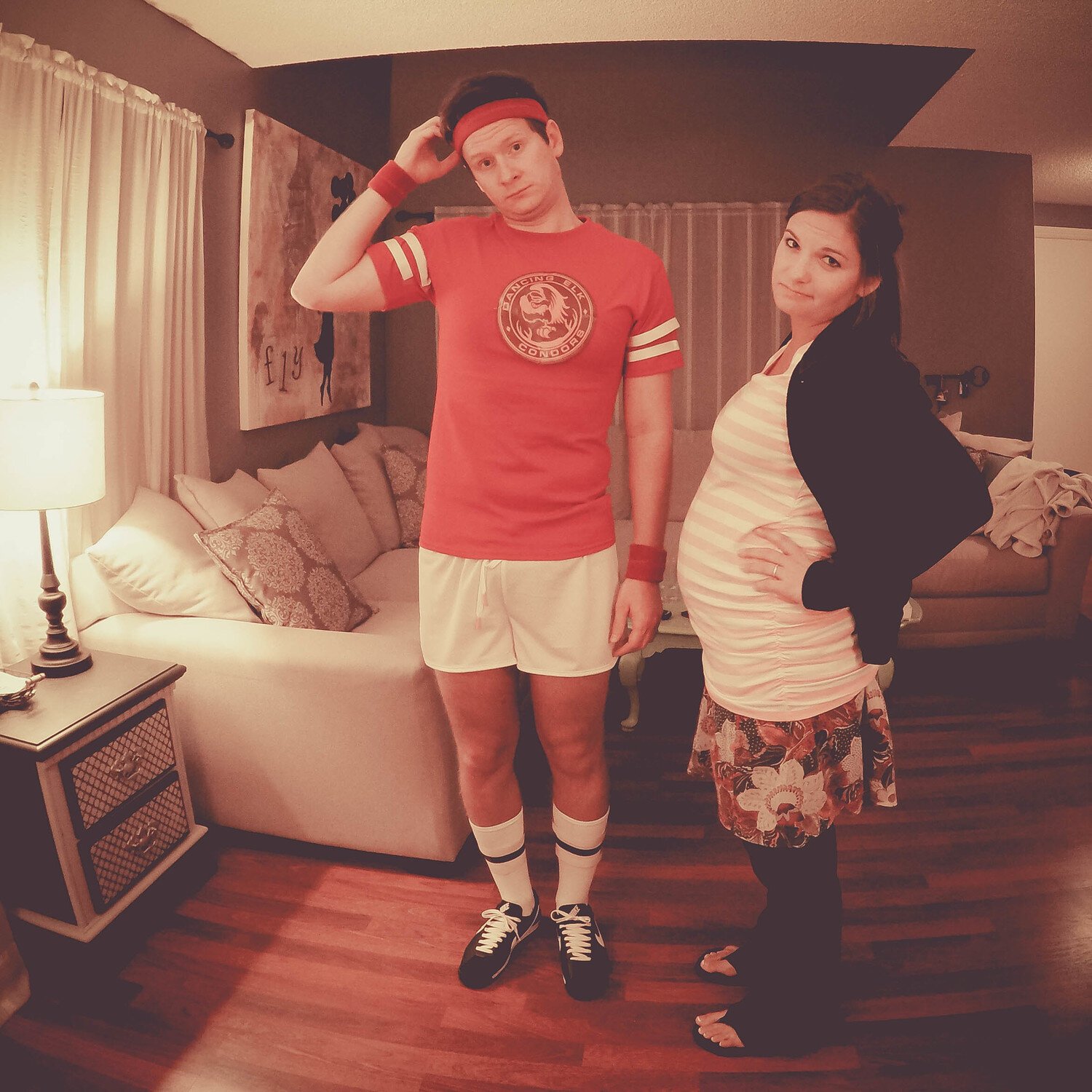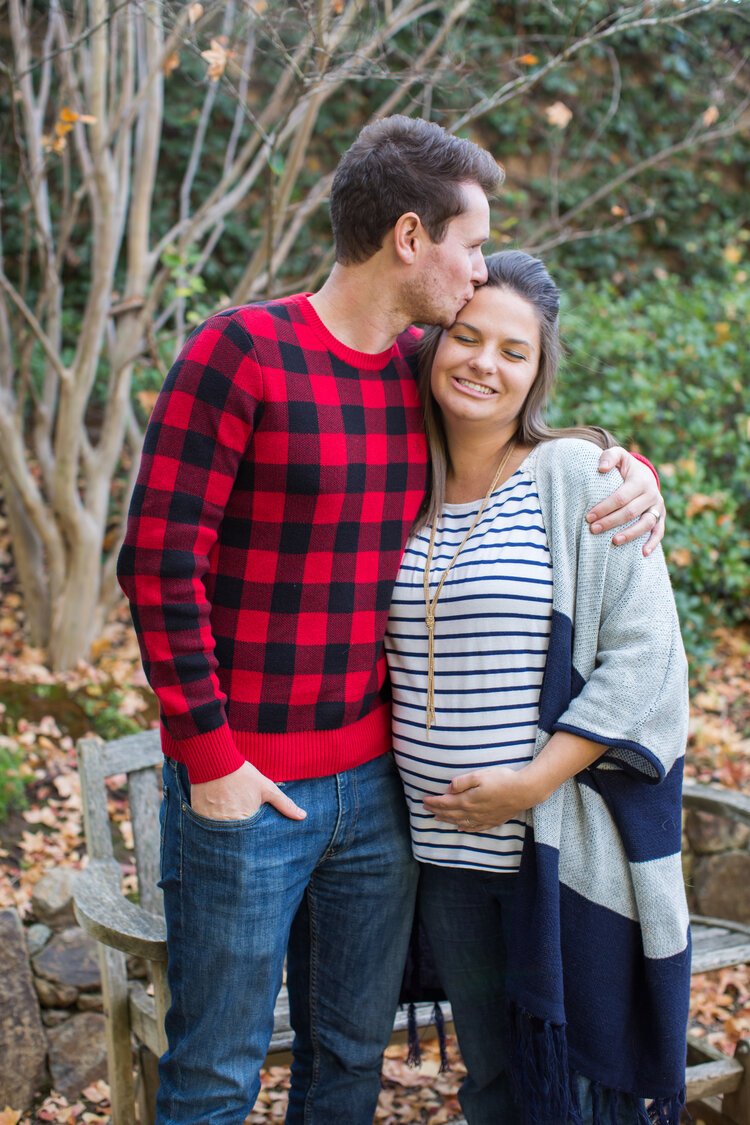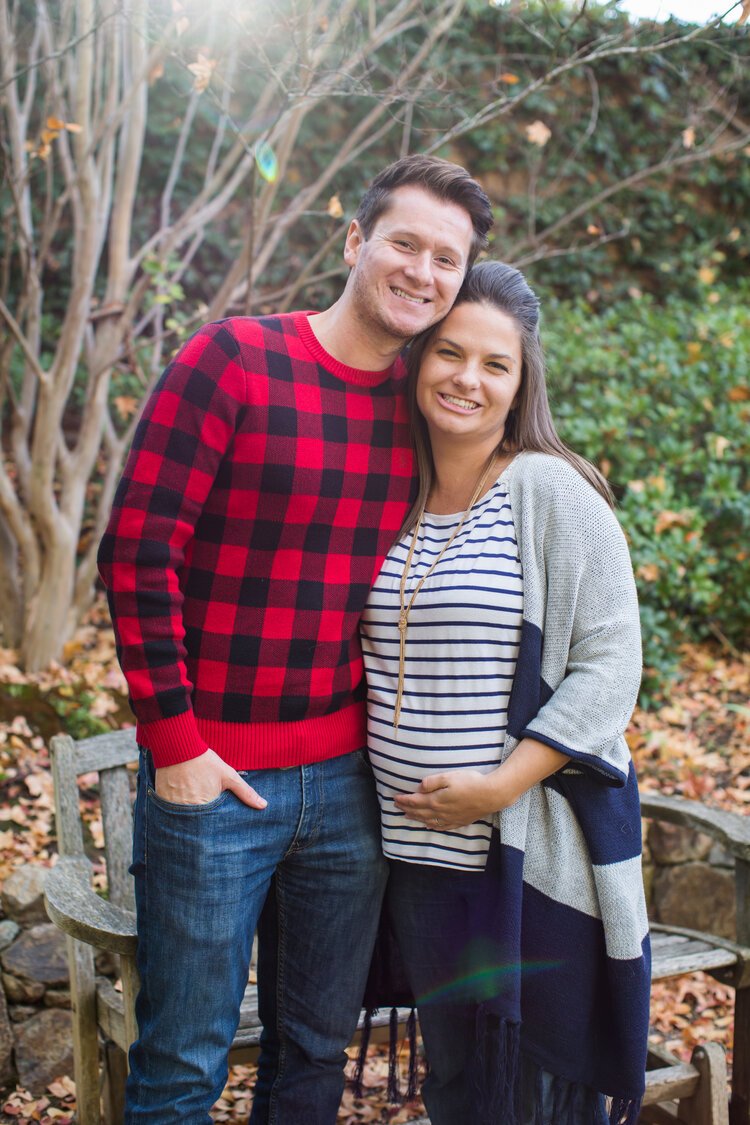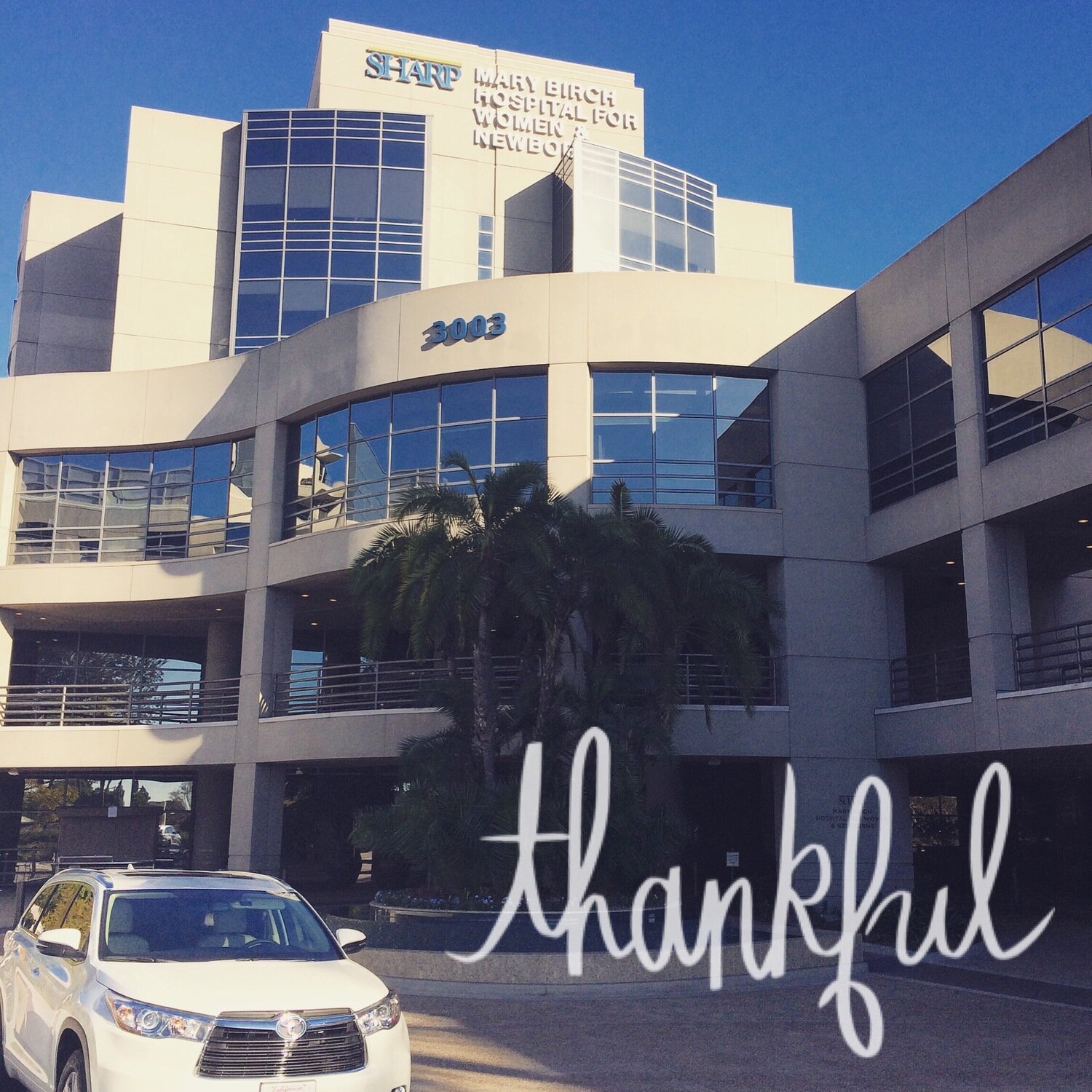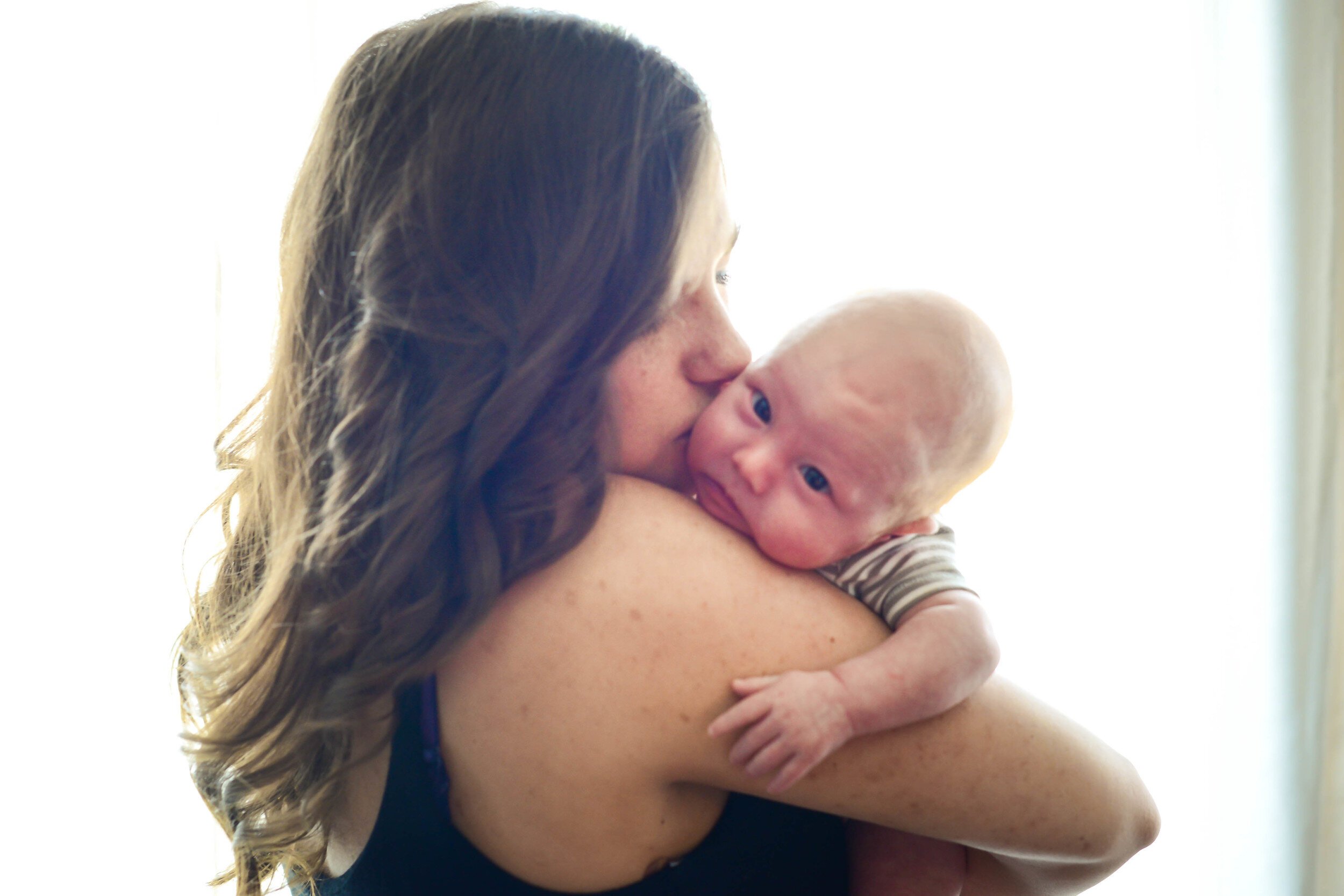
The Story Behind The Noble Paperie
Below you will find an unabridged version of Sebastian’s birth story. I’ll be honest—it’s not short. So grab a chair and get ready. You won’t regret your time spent.
Because it’s 2023+, and because the internet is, well, the internet, I need to preface this post with the obvious fact that I am not a doctor. None of the information here should be construed as medical advice - it is simply anecdotal and informational based on my own personal experiences. There are some facts here, backed up by references from reputable medical sources that are cited at the end of this entry. Everything else is my own writing and experience, and should be viewed as that, and nothing more. Sebastian’s pregnancy was my 3rd pregnancy, the one after my missed miscarriage. It started as most pregnancies after loss do—full of nerves and uncertainty. And then my water broke at 16 weeks. If you don’t understand the severity of that, let me explain: 16 weeks is 8 full weeks before a baby is even considered viable. This means it’s 8 weeks before doctors can offer any sort of medical intervention to save your child. This means that survival rates for babies born at this gestation is 0%, 100% of the time.
I was admitted and was given ultrasound after ultrasound to check my water levels and to monitor the baby. I was put on a multitude of medications to try to protect myself and the baby… mind you none of which could prevent delivery
On our 5th day of being in the hospital, the attending doctor came in. She had bad news. She had reviewed my latest ultrasound and knew that my water levels were too low—the baby we so wanted and prayer for was at risk of surviving with multiple disabilities, some of which could be incompatible with life. Should I continue with the pregnancy, there was further risk of contracting an infection. If I contracted an infection during this time, my uterus could become septic, and not only would we lose our baby, I would also then need to have my uterus removed to prevent the infection from spreading. It was the doctor’s professional opinion that we needed to terminate the pregnancy.
She understood that this was a very hard and complicated decision. She told us she would give us the night to think about it. She mentioned she would do a final ultrasound in the morning and we would then need to make our decision. I don’t know if I ever felt like I had a decision in any of this. Our baby’s life was on the line. My life was on the line. It was an impossible situation. We thought about it, talked about it, and spent a lot of time crying and sobbing that this was our reality.
The next morning came, and we went in for our ultrasound, expecting the worst. The silence from the doctor was deafening. It seemed to take longer than any other scan, and while we hoped for a miracle, we assumed one would never come. But it came. She stared at the monitor with a look of disbelief. My water had not only sealed up, but it had increased by more than a centimeter overnight. At this point, she could not recommend termination.
We were discharged! They sent me home on strict bedrest — only up to use the bathroom, shower 1x a day (if necessary), and other than that, my orders were to lie down and to wait it out. So that is exactly what I did.
Months rolled by and every night, Jonathan and I would tell each other: we made it through another day! I had spent all this time on pregnancy disability leave. I was cleared by my doctor to finally return to work. And after 11 weeks, I was ready to rejoin civilization!
A small sidebar: it is not lost on me that the one and only Halloween costume we wore when I was pregnant was that of Juno + Bleeker from the film Juno. Juno is played by Elliot Page, a transgender actor who made his social transition the year before Sebastian did. That was, until I woke up the morning before I was meant to return to the office. I felt contractions and thought maybe it was Braxton hicks, and so I decided to stay in bed to see if they would go away. I finally got up to go to the bathroom and was met with my worst nightmare. I was bleeding, substantially.
We booked it back to the hospital and I was admitted within 15 minutes of arriving. They did tests and ultrasounds and concluded several things after only a few hours:
I would be staying at the hospital until I was ready to deliver the baby.
I was now so high risk, that there was no way they could recommend to send me home. After several days, I came away with a laundry list of conditions, each one a big enough complication on their own. Together, detrimental and serious for both myself and our babe. They were as follows:
Vasa Previa. As defined by What to Expect When Your Expecting as "a condition in which some of the fetal blood vessels that connect the baby to the mother run outside the umbilical cord and along the membrane over the cervix. When labor begins, the contractions and opening of the cervix cause these vessels to rupture and can cause fetal death." I'll be the first to say that this is an extremely broad explanation of the condition.
Additional explanation: Vasa previa is a rare pregnancy complication that occurs in around 1 out of every 2,500 pregnancies. This incidence rate rises substantially with patients who undergo IVF, occurring in about 1 in every 250 IVF pregnancies. It can lead to severe blood loss for your baby if not carefully managed.¹ With vasa previa, the protective jelly around your baby’s umbilical cord is removed, and in my case, the umbilical cord was combined with cells from my cervix. This meant that if I had progressed to labor naturally, our baby would have had a 95% chance of mortality.From there, I had further complications, some associated with Vasa Previa and some because I was just that lucky:
Abnormal placenta growth.
In a normal, healthy pregnancy, the umbilical cord grows out of the center of the placenta. In my case, the cord had instead grown abnormally out of the side. The placenta, being the baby's only life support in the womb, cannot function properly and cannot correctly sustain the baby during the pregnancy with such an issue.Bi-lobed placenta.
This means that as the baby and placenta grew, the placenta managed to split into two parts and was held together by tiny, fragile stands connecting the two pieces together. This was extremely dangerous; if any of those strands ruptured, it would essentially mean the baby would suffocate to death within minutes.Velamentous Cord Insertion (VCI).
Since my baby’s umbilical cord grew out of the side of the placenta instead of the middle, it was able to traverse down the birth canal and get stuck in between the baby and the cervix. This is a problem on its own, but it causes further complications. The umbilical cord is strong, and is surrounded by a super tough jelly that protects the cord from being torn or crushed in utero. When velamentous cord insertion occurs, this jelly disappears and the cells of the umbilical cord implant themselves into the amniotic sac. This leaves the cord highly susceptible to damage. Any damage to the cord (my water breaking, contractions, basically... labor of any form) means rapid fetal hemorrhage or suffocation, and ultimately death for the baby.Blood clot on cervix.
This had ruptured, causing a partial placenta abruption (and what they think initially brought me in).Partial placental abruption.
This is the separation of the placenta from the uterine lining. The placenta is part of your baby’s life support system, transferring oxygen and nutrients from you to your babe for their survival. When the placenta separates from your uterine lining before labor, it can interrupt the transportation of oxygen and nutrients. Less than 1% of pregnancies will experience a placental abruption.
Needless to say, we had a few complications to deal with. I was extremely privileged to live a few miles from the only hospital in San Diego that would treat a pregnancy with vasa previa. If you didn’t live nearby and ended up with this condition, you would be transferred to this hospital, so I felt really fortunate that we just happened to live so close. It was also added a small bit of comfort knowing that my healthcare team was aware and understanding of my condition, and had a plan to help and support me.
The other person who was extremely knowledgeable and supportive was my OB-GYN. I know a lot of people say they love their OB… but my love and appreciation for my own knows no bounds. She is the sole reason Sebastian was delivered safely. The procedures and rule she put in place, the decisions she made about my care kept both Sebastian and I safe during our hospital stay. I want to also mention that I was in the hospital for 40 days, and she visited me in my room EVERY. SINGLE. DAY. Not just stopping by and saying hi, but she came and stopped by my room, sat on my hospital bed and talked me through our plan and she calmed my fears. I have nothing but love and appreciation for this woman, who I would always say, reminded us of Edna Mode. 😂
This second time, I was admitted to the hospital at 27 weeks. Our babe was past the minimum 24 weeks of viability… but only by 3 weeks. For context, 27 weeks is 11 weeks early.
So we knew at this point that we would be facing some time in the NICU—we just didn’t know how much. How much time would depend on how long I was able to stay pregnant. We were told at this point that every single day I was able to keep her in my belly equated to 3 fewer days in the NICU.
At this gestation, the survival rates rise substantially week over week. For example, at 26 weeks of gestation, the survival rate is 80%, versus at 27 weeks, it’s 90%. So we knew that days and hours of our babe staying in utero, really mattered.
I managed to stay pregnant and stay in the hospital for 40 days. It was a time filled with huge amounts of ups and downs. I made friends with the nurses, saw my OB weekly, and my perinatologist weekly. I went to support group and had scan after scan to check progression. I had shots of steroids and lots of medication to try to stop or prevent preterm labor. I had an IV in for my entire time, just in case I had to go into emergency surgery. I watched a lot of TV and read a lot of books. Despite being in a hospital surrounded by people, I spent a lot of time alone. I never went outside. Depression came early in my stay and set up camp. She sat on my chest and I worried about every possible outcome. Would we lose the baby? Would I die?
Eventually, I couldn’t handle it any longer. I had exceptional care from my health care team and felt supported by my husband and our family and friends who would constantly come to visit. But after 40 days confined to a single room, unable to walk or go outside or even take a shower without asking someone first, caught up to me. Looking back, I don’t think it was my body that ended up failing. I think mentally, I was done. I was so scared of what would be on the other side, but I also knew the current situation I was in and I couldn’t imagine struggling through another 4 weeks until my scheduled C-section delivery.
In the end, I had an emergency C-section. My body started active labor, and after 3 days and all the medical intervention, I couldn’t hold on any longer. My OB was called, and as soon as she came into the room, she was the pilot of an extremely important mission—one to get me prepped and down to surgery and to get our baby out as soon as possible.
It was an emergency. And I do remember a lot of it, though after having many conversations with my partner who was also there, my recollection and understanding of the events is very different than his. Trauma can do this to you. It can really distort reality. I know everything moved really quickly. After my spinal tap and quickly ushering my husband in, they had our babe out within 7 minutes of starting surgery. (For comparison, with our 2nd, it took closer to 15 minutes.)
But Sebastian was born! She was assigned male at birth, born at 32 weeks and 4 days, almost 2 months premature. She was 4lbs 9oz and was almost 19 inches long. She was big for her gestational age and her lungs were developed enough to be on cannula, but with room air instead of oxygen. She had a long road ahead of her, but she was here.
Everything in the aftermath of surgery was a blur. I remember being terrified. I remember delayed cries from our baby. I remember my partner leaving my side and telling me it was going to be okay—that he was going to be with the baby. (Even writing this and remembering it 8 years later, it feels so very real and brings tears to my eyes). An entire NICU team was also present for our surgery and was ready to take over once she was out. And they did. They took her straight to the NICU and my partner went with them while I finished up and then went to recovery and post-op.
We spent an additional 7 days in the hospital. Which was a really long time for a recovery, but was mainly so we could be in close proximity to the NICU, instead of heading home and having to drive back and forth to the hospital each day. Which is what eventually happened for an additional 34 days. Sebastian spent 34 days in NICU before we were able to come home as a family of 3.
To be honest, the 34 days of NICU time were some of the darkest of my journey. I had spent over 40 days in the hospital and was suddenly allowed to go home and could return to civilization and regular life… all without our baby.
I struggled with severe postpartum depression, all while watching our first earth-side baby struggle to survive. She had apnea and a host of other issues that I still don’t have the words or energy to write about. 7 years later, I now think I never will. All I know is those 34 days were some of the hardest and darkest of my life.
At the time of writing this, our baby is 7 now. When she was 5, she shared with us that she never liked the nickname we used to call her, and that she wasn’t a boy. We finally understood that Sebastian is transgender. Our lives were rocked by this, but in a different way than any of our previous experiences.
Overall, we are thankful that she felt safe enough to tell us who she is and how she feels. We will forever be grateful that Sebastian chose us to be her parents. We want nothing more than for her to feel safe always being her truest and most authentic self.
Needless to say, all of these experiences changed me. They transformed me into the person and mother I am today. One who is a lot more understanding and empathetic. One who is acutely aware of what it takes to get pregnant and stay pregnant. One who is aware that getting pregnant, staying pregnant, and the millions of things that have to happen in your body in order to sustain a pregnancy, are never guaranteed.
These experiences and our children, both the ones earth side and the ones we lost to miscarriage, have inspired my line and so many of the pieces I’ve created for The Noble Paperie.
It’s my hope that sharing my my story can help others feel less alone. It’s my hope that our cards and paper products can go offer love and support to an entire community of people who are often ignored or overlooked. It’s my hope that our cards offer loved ones the perfect words when they feel they may not have the right ones.
Yes, my experiences are rooted in grief, and I’ve spent a lot of time processing, both on my own and with a mental health professional. But I love this community. And I love the work I do. It allows me to honor each and every one of my babies, especially when it’s so hard to honor and connect with my children who aren’t earth-side. It also helps to honor other bereaved parents, just like me. I want to change the experiences for parents like me. I want us to feel less alone in our grief, loss, and trauma. At the end of the day, my sole hope is that The Noble Paperie continues to support those struggling through miscarriage, loss, infertility, and difficult pregnancies. That The Noble Paperie is, and will continue to be, a line to honor the bereaved and everyone in between. Thank you, from the bottom of my heart, for reading all of this.
Kate’s birth story and her daughter Sebastian has inspired so much of The Noble Paperie’s line.
REFERENCES: 1. Vasa Previa. Cleveland Clinic. https://my.clevelandclinic.org/health/diseases/23465-vasa-previa#:~:text=What%20is%20vasa%20previa%3F,cervix%20(or%20cervical%20os). Accessed: April 20, 2023.


